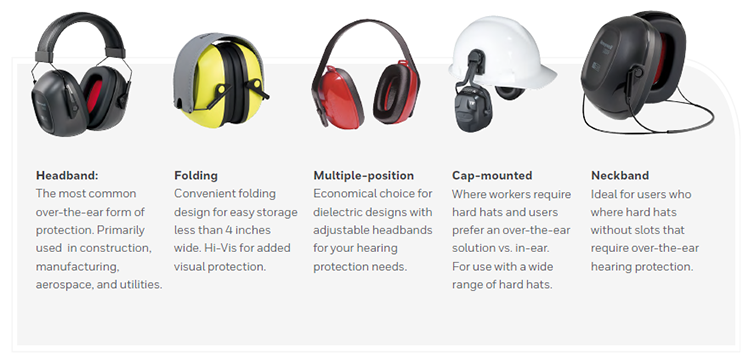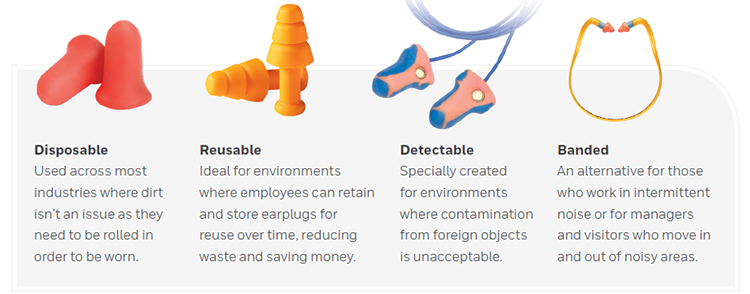Noise-induced hearing loss (NIHL) is one of the most common health problems in the workplace. The tragedy of this is that - in most cases - it is entirely preventable, which is why implementing a successful hearing conservation program in the workplace is paramount.
This guide explains the four key steps that health and safety professionals can take to raise employee awareness of the risks associated with noise in the workplace, educate them on the benefits of hearing protection, and train them in the correct use of Hearing Protection Devices (HPDs).
Assess the Risk
A successful hearing conservation program begins with a risk assessment. This also a legal requirement, with OSHA mandating that "the employer shall administer a continuing, effective hearing conservation program, as described in paragraphs (c) through (o) of this section, whenever employee noise exposures equal or exceed an 8-hour time-weighted average sound level (TWA) of 85 decibels measured on the A scale (slow response) or, equivalently, a dose of fifty percent. The risk assessment shouldn't simply identify sources of continuous noise (e.g. machinery) in the workplace, but also potential impact noises that may occur intermittently and can be extremely damaging.
Where circumstances such as high worker mobility, significant variations in sound level, or a significant component of impulse noise make area monitoring generally inappropriate, the employer shall use representative personal sampling to comply with the monitoring requirements of this paragraph unless the employer can show that area sampling produces equivalent results.
If excessive background noise levels are detected or it is known that impact noises may occur, employers need to take action to tackle the risk. In line with the 'hierarchy of controls' pyramid below, the most effective response is to eliminate the noise source altogether. If this is not possible, noise levels should be reduced by replacing existing machinery with less noisy equipment or by implementing engineering controls such as attenuation barriers.
The next step is adopting administrative controls, for example reducing the time workers are exposed to noise. However, where eliminating or reducing noise levels isn't an option, the use of HPDs becomes essential. OSHA mandates that individual hearing protectors need to be made available to workers if their daily noise exposure exceeds 85 dB(A).

Choose the Right HPD
Once the risk has been identified, employers need to provide workers with appropriate HPDs, which commonly take the form of earplugs, earmuffs, or banded HPDs. These types come in a wide variety of designs and sizes that can be matched both to the attenuation requirement and to the application. Importantly, these variations mean that wearer comfort and preferences can be accommodated.
Passive Earmuffs
Earmuffs are generally well-suited to applications where HPD use is intermittent, as they are easy to put on and take off. Common types of earmuffs include:

Earplugs
Earplugs are a good choice for workplaces with continuous noise where workers need to wear hearing protection for long periods of time. They are recommended for situations where a worker needs to simultaneously wear spectacles or goggles which could compromise the fit of earmuffs. There is no ‘one-size-fits-all’ product because ears differ significantly from person to person and even from ear to ear on one individual. With this in mind, offering a minimum of two to three types of earplugs is important in order to fit the variety of ear canal sizes.

Proper Fit
Providing workers with HPD is clearly not enough to preserve their hearing. Ensuring that they are wearing it consistently and correctly is just as important. Poor fit of HPDs can cause insufficient attenuation rates, meaning that even if workers wear their earplugs or earmuffs conscientiously, they are not protected against harmful noise. This is why training is so vital and should, ideally, be delivered on a one-to-one basis.
A number of studies show that individual training is the most effective method for determining individual attenuation levels . This is called ‘fit-testing’ and is a very simple procedure that that usually takes only about five minutes, but can make a huge difference. It enables safety professionals to verify attenuation levels when earmuffs or earplugs are in use, and workers to learn how to fit HPDs correctly. It is therefore vital to set the correct selection, use and maintenance of HPDs in a wider context, to encourage personal engagement.
Protecting Hearing On and Off the Job
The ultimate aim of an effective hearing conservation program is to encourage workers to take responsibility for protecting their hearing both on and off the job, rather than just view hearing protectors as a workplace compliance issue. It is therefore vital to set the correct selection, use and maintenance of HPDs in a wider context, to encourage personal engagement.
According to the World Health Organization, people are more likely to take preventive actions if they experience symptoms of hearing loss or tinnitus . In this respect, tools such as audio files and videos that demonstrate the symptoms of conditions such as tinnitus and its lifechanging consequences, as well as discussion about the issues should underpin any hearing conservation program. Over time, these resources can help workers maintain and enhance their knowledge of preventing NIHL through proper use of the right hearing protection. Other tactics that can be incorporated in the program include:
Health Monitoring
Set up regular hearing tests and share the results: several studies have found that incidences of NIHL drops significantly when workers are provided with the results of their annual audiometric tests.
Continuous Training
Make sure all workers have the latest information and regular training.
Reinforcement
Ensure workers regularly see reminders on the importance of hearing protection, e.g. through a hearing expert presence, or visible posters in the workplace.
A good hearing conservation program provides workers with the right choice of fit-for purpose HPDs – it is vital that they understand the importance of wearing hearing protection correctly. More generally, the key is ensuring the workers are actively involved in the process so that they can fully appreciate the importance of preserving their hearing beyond the workplace.
To find hearing protection to fit your needs, shop below.
Article Source:
Honeywell Howard Leight